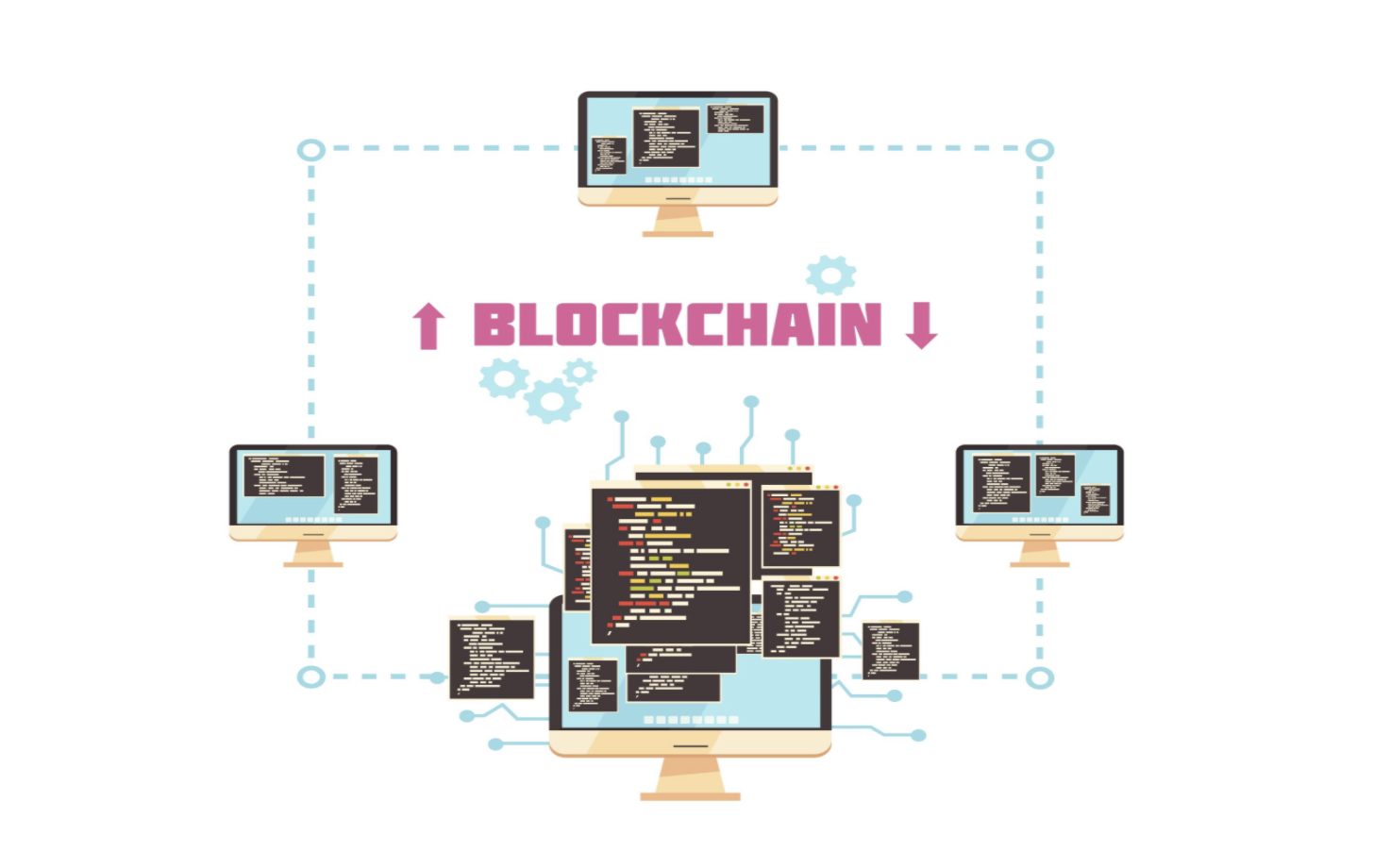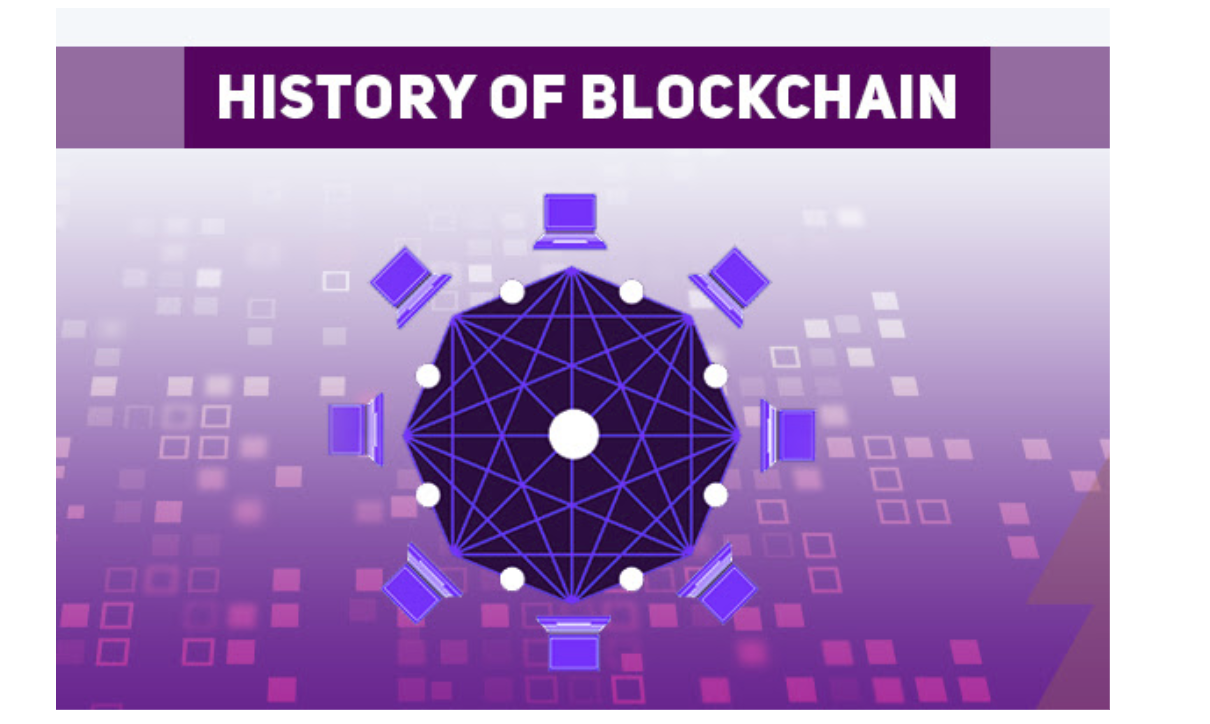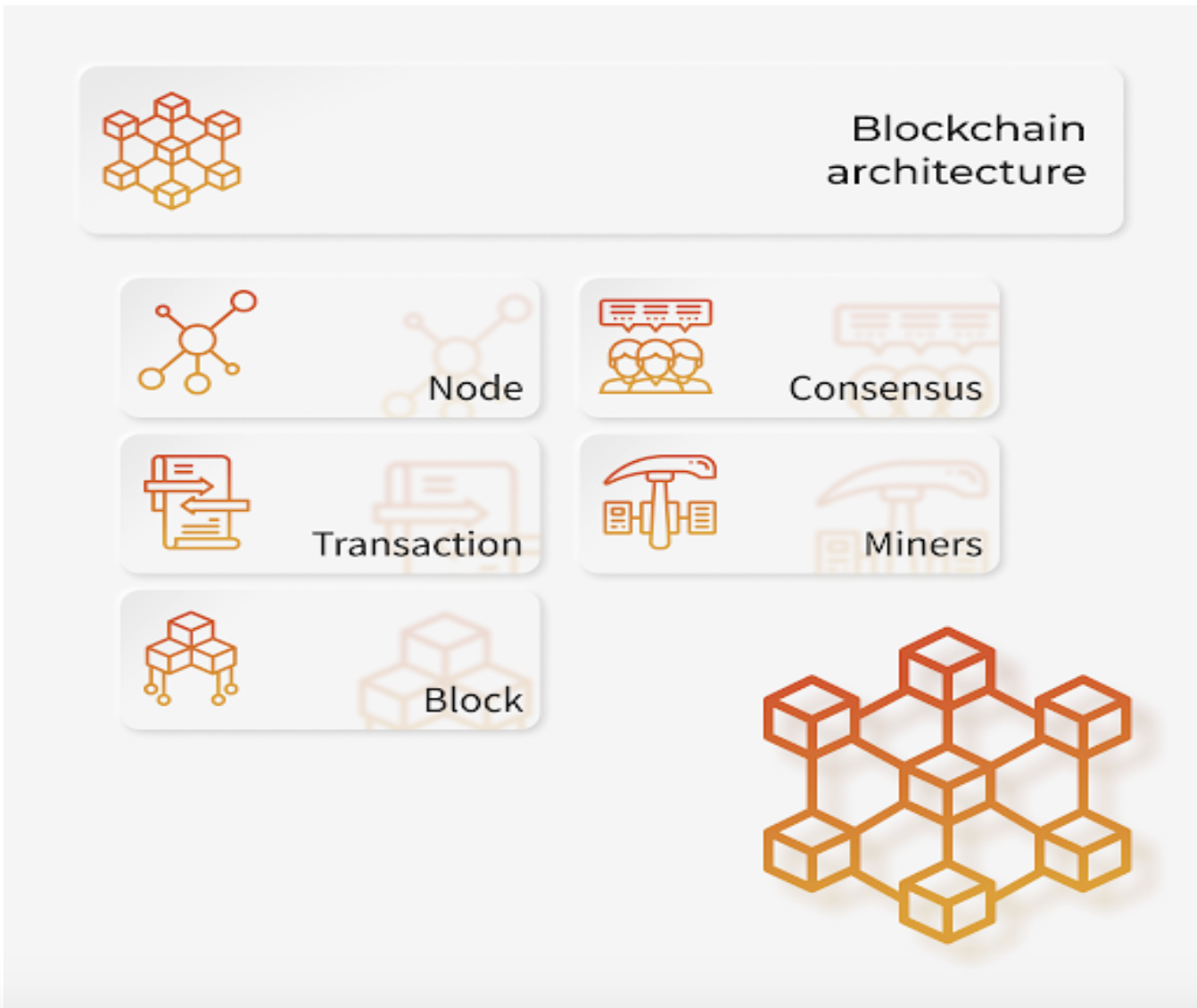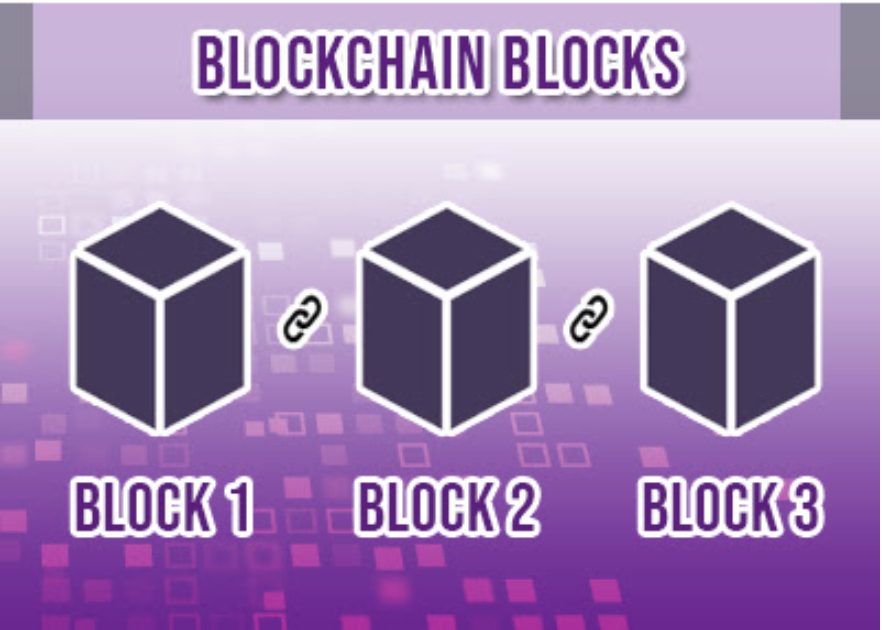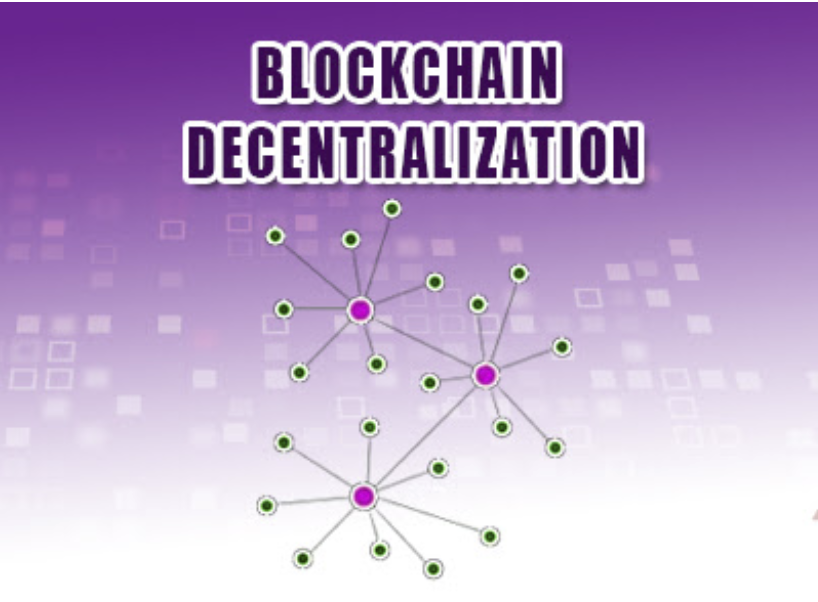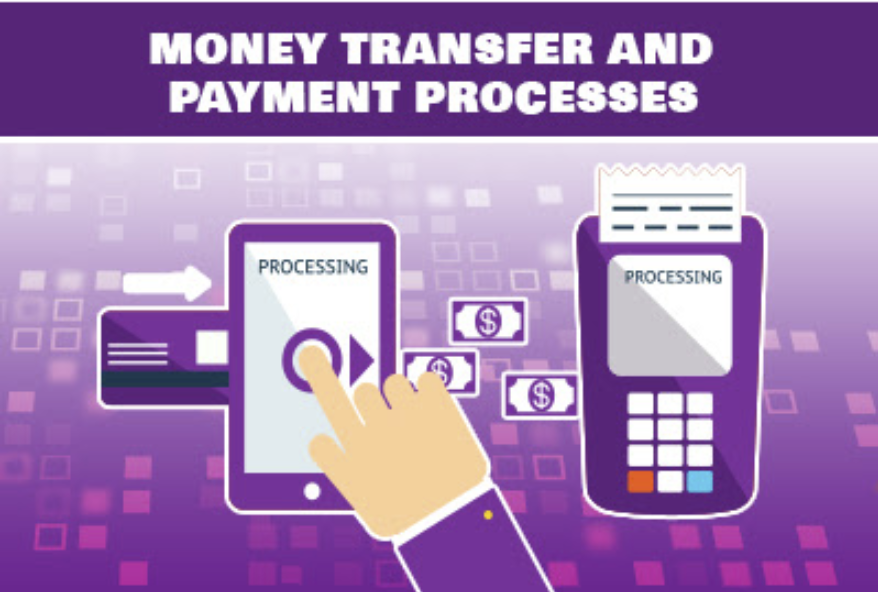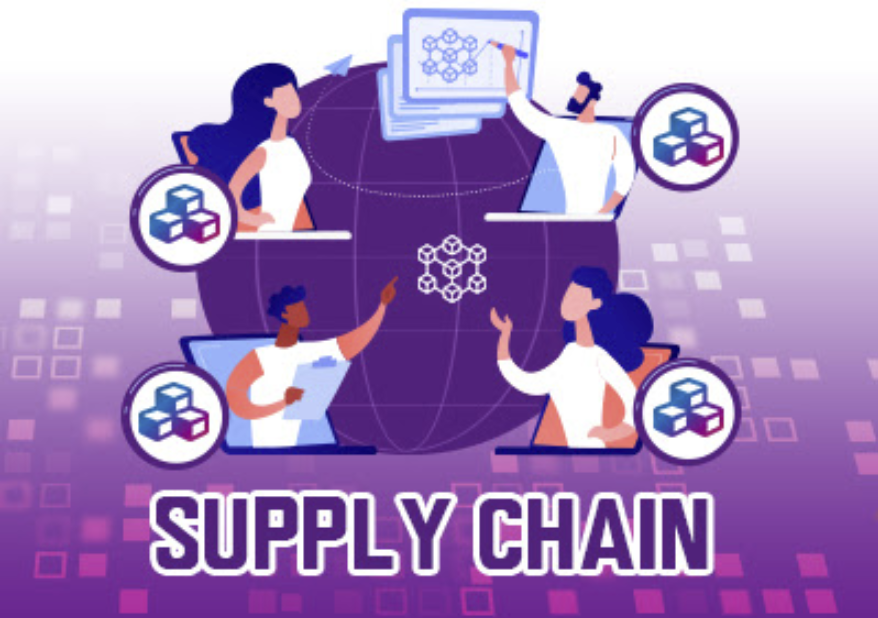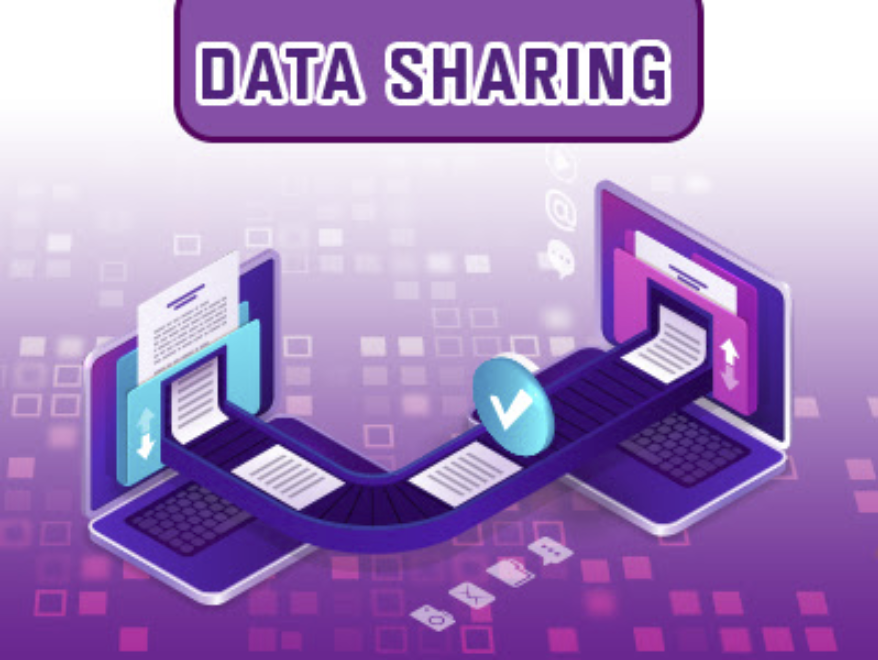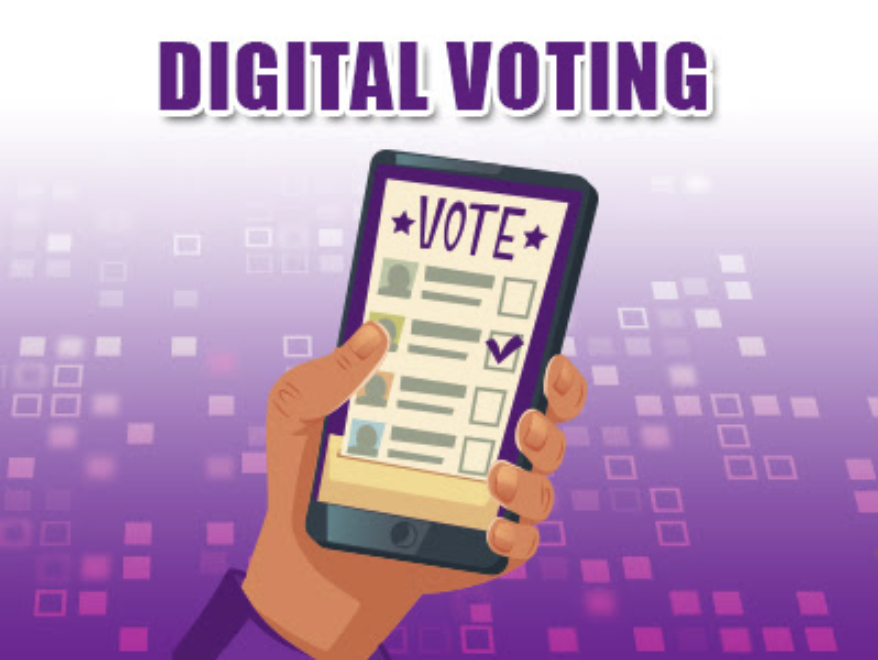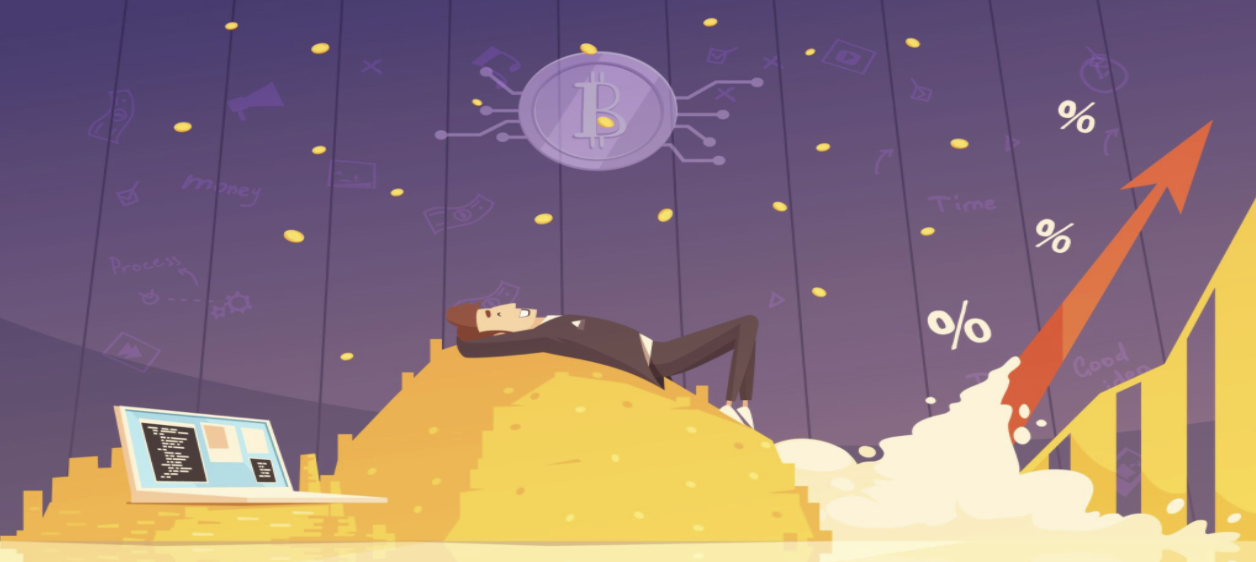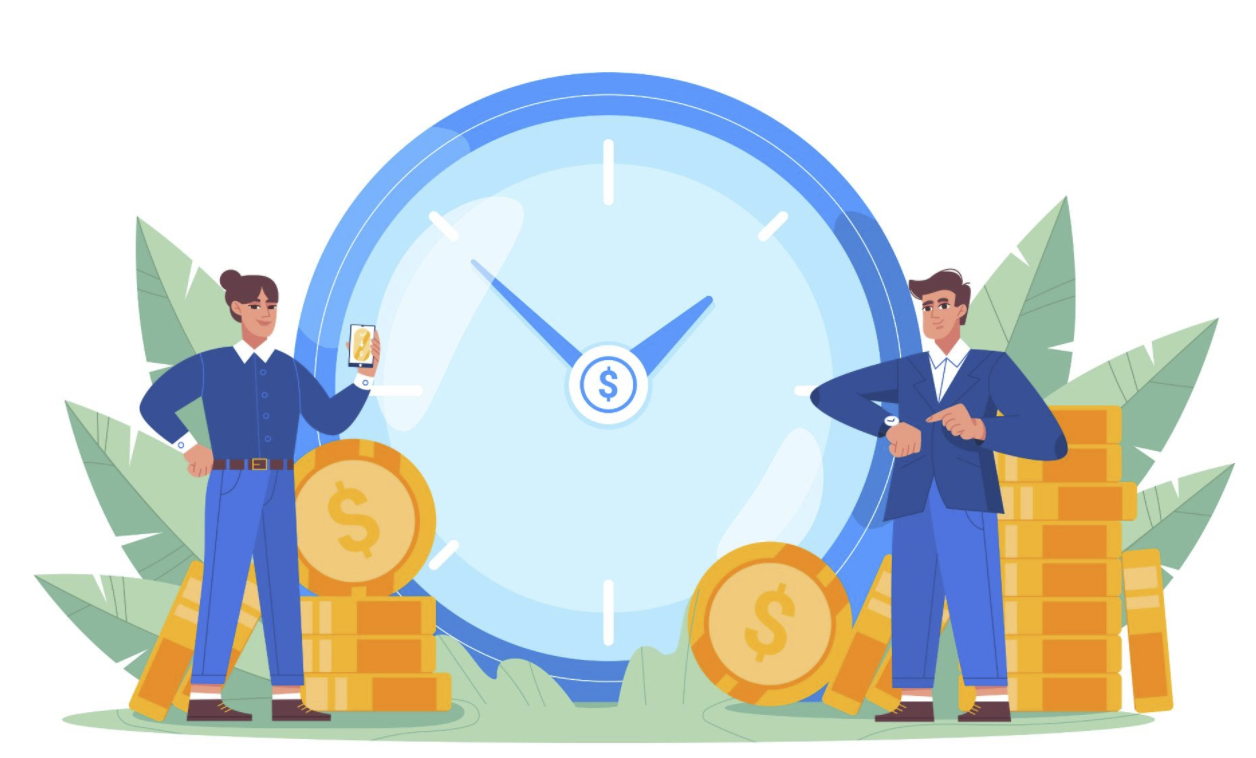What is Blockchain Technology? A Simple and Detailed Explanation
Fawzan Hussain
3 Sep 2021
•
13 min read
Blockchain is a method of storing data in such a way that it is hard or costly to alter, hack, or deceive it. A blockchain is a digital log of transactions that is replicated and redistributed across the blockchain's complete computer network systems. Distributed Ledger Technology is a decentralised database that is administered by various people. This means that if a single block in a chain is modified, it will be immediately clear that the chain has been interfered with. Hackers would have to alter every block in the chain, amongst all distributed versions of the chain, if they intended to destroy a blockchain system.
Blockchains like Bitcoin and Ethereum are steadily expanding as new blocks are added to the chain, increasing the privacy of the ledger dramatically.
With the technology evolving, the market scope for blockchain jobs, crypto jobs, and rust developer jobs is quite high.
How does blockchain work?
The blockchain works in four steps.
1. Authentication
Although the initial blockchain was supposed to function without a central authority (i.e., no bank or regulator deciding who can transact), transactions must still be validated. Cryptographic keys, a sequence of data (like a password) that recognizes a user and grants access to their "account" or "wallet" of worth on the system, are assigned to do this. Each individual has a private key and a public key that is visible to all. Using them generates a safe digital identity that can be used to authenticate users via digital signatures and ‘unlock' transactions.
2. Authorisation
Before a payment between users has to be added to a chain of blocks, it must first be authorised, or permitted. The decision to add a transaction to the network on a public blockchain is decided by consensus. This implies that a majority of the network's "nodes" must agree that the transaction is genuine. The individuals who own the machines in the network are rewarded for confirming transactions. The term for this procedure is "proof of work."
3. Proof of work
To add a block to the chain, Proof of Work asks the people who own the machines in the network to solve a challenging mathematical problem. Mining is the process of resolving an issue, and ‘miners' are usually compensated in cryptocurrency.
The mathematical challenge can only be solved through trial and error, with a 1 in 5.9 trillion chance of succeeding. It necessitates a significant amount of computational power, which consumes a significant quantity of energy. This means that the benefits of mining must surpass the price of the machines and the electricity used to power them, because a desktop machine would take years to solve the mathematical problem. Miners frequently pool their money through firms that aggregate a big group of miners to achieve economies of scale. The profits and fees provided by the blockchain network are then shared among these miners. As more machines join the blockchain in an attempt to analyse the challenge, the problem becomes harder to solve and the network grows larger, presumably dispersing the chain further and making it very difficult to destroy or hack. However, mining power has now become concentrated in the hands of a few mining pools in practise. These major corporations have the processing and electrical capacity needed to run and build a blockchain network based on Proof of Work certification.
4. Proof of stake
Later blockchain networks incorporated “Proof of Stake” validation consensus algorithms, in which members must have a stake in the blockchain – typically by owning some of the cryptocurrency – to be eligible to select, verify, and validate transactions. Because no mining is required, this saves a significant amount of computational power. Furthermore, blockchain technology have grown to include "Smart Contracts," which execute transactions instantly when specific criteria are satisfied.
History of blockchain
Many of the technologies we take for granted now were once quiet revolutions. Consider how often smartphones have altered our way of life and work. People used to be absent when they left the office because a telephone was attached to a location rather than a person. Global nomads are now launching new businesses directly from their phones. To think that smartphones have only been there for a decade. Another silent revolution is underway: blockchain, a distributed database that keeps track of a constantly growing list of ordered documents known as "blocks." Consider what has occurred in the last ten years:
The first blockchain breakthrough
Bitcoin, a digital money experiment, was the first big blockchain breakthrough. Bitcoin has a market valuation of $10–USD 20 billion and is used for payments by millions of individuals, including a substantial and expanding remittances business.
The second blockchain breakthrough
The second breakthrough was blockchain, which was simply the understanding that the technology that underpins bitcoin could be removed from the money and applied to a variety of other inter-organizational collaborations. Almost every massive economic institution in the world is now researching blockchain, and 15% of banks are projected to use the technology in 2017.
Smart contract
The third breakthrough was the "smart contract," which was embodied in ethereum, a second-generation blockchain system that inserted small computer programmes directly into the blockchain that allowed financial assets, such as loans or bonds, to be expressed rather than just bitcoin's cash-like tokens. With various projects on the way to market, the ethereum smart contract platform currently has a market cap of around a billion dollars.
Proof of Stake (PoS)
The fourth key breakthrough, which is at the forefront of blockchain thought right now, is known as "proof of stake." The security of today's blockchains is provided by "proof of work," in which the group with the most total processing power makes the decisions. These organisations are known as "miners," and they run massive data centres in exchange for cryptocurrency payments. The new methods eliminate data centres in favour of complicated financial instruments that provide a similar or even better level of protection. Later this year, proof-of-stake systems are likely to go live.
Scaling of blockchain
Blockchain scaling is the sixth key innovation on the horizon. Every transaction is currently processed by every computer in the blockchain network. This is a slow process. By calculating how many computers are required to verify each transaction and efficiently splitting the work, a scaled blockchain accelerates the process without compromising safety. It's a difficult task, but not an insurmountable one, to manage this without jeopardising blockchain's famed security and resilience. A scalable blockchain is predicted to be fast enough to power the IoT devices while also competing with the banking world's key payment middlemen (VISA and SWIFT).
Main Components of Blockchain Architecture
- The following are the main components of the blockchain architecture:
- Within the blockchain, a node is a person or a computer.
- A transaction is the smallest unit in a blockchain system.
- A block is a data structure that stores a set of transactions and distributes them to all nodes in a network.
- A chain is a set of blocks that are arranged in a specified order.
- Miners are nodes that carry out the block verification process.
- Consensus is a collection of rules and agreements that govern how blockchain transactions are carried out.
1. Blocks
Blocks are files that permanently store data related to the Bitcoin network. A block contains a list of some or all of the most recent Bitcoin transactions that have not yet been recorded in any previous blocks. As a result, a block is similar to a page in a ledger or record book. When a block in the blockchain is ‘completed,' it makes room for the next block on the chain. As a result, a block is the permanent storage of records that can't be changed or erased once they've been recorded.
2. Decentralization
The movement of control and decision-making from a centralised entity (person, organisation, or group thereof) to a dispersed network is referred to as decentralisation in the blockchain. Decentralized networks aim to limit the amount of confidence that participants should place in one another and prevent them from exerting power or control over each other in ways that harm the network's performance.
3. Openness
The acceptance and interoperability of open standards are built on a solid basis. A major use application for blockchain is the digitization of assets and the depiction of their worth as a token. The Token Taxonomy Initiative is attempting to establish a common framework that describes what a token is, how it operates, and what it symbolises so that they're used universally across token-enabled blockchain platforms. This is a vital step in guaranteeing shared standards with Fabric v2.0's future fabric token implementation.
4. Standardisation
By 2020, the ISO hopes to have a terminology standard in place. However, because the needs need to be defined further, some of the most crucial aspects do not currently have timeframes. Security, privacy, identification, and interoperability are among them.
-
The International Telecommunication Union (ITU-T) has formed a distributed ledger technology (FG-DLT) focus group to build a standardised roadmap for interoperable DLT-based services.
-
The International Organization for Standardization (ISO) has also just established a technical committee (TC) 307 on blockchain and distributed ledger technology.
-
The IEEE has launched a blockchain member interest group to coordinate and share information about blockchain-related activities.
-
The Web Ledger Protocol, developed by the W3C, is a distributed ledger technology.
Types of blockchain and how they work
Public blockchains, private blockchains, consortium blockchains, and hybrid blockchains are the four basic forms of blockchain networks.
1. Public blockchain
Anyone with internet connectivity can join on a blockchain platform and become an authorised node, making public blockchain non-restrictive and permissionless. This user has access to current and historical records, as well as the ability to perform mining operations, which are sophisticated calculations required to verify transactions and add them to the ledger. On the network, no legitimate record or transaction may be modified, and since the source code is generally open-source, anybody can check the transactions, uncover errors, and offer fixes.
2. Private blockchain
A private blockchain is a blockchain network that operates in a restricted context, such as a closed network, or is controlled by a single entity. While it functions similarly to a public blockchain network in terms of peer-to-peer connectivity and decentralisation, this blockchain is substantially smaller. Private blockchains, rather than allowing everyone to join and supply computer power, are often run on a small network within a company or organisation. Permissioned blockchains and business blockchains are other names for them. This is how the private blockchain works.
3. Hybrid blockchain
Organizations who desire the best of both worlds will sometimes employ hybrid blockchain, a type of blockchain that includes characteristics of both private and public blockchain. It allows businesses to build up a personal, permission-based system alongside a public, permissionless system, enabling them to govern who has access to specific data stored on the blockchain and what information is made publicly available. In a hybrid blockchain, transactions and records are usually not publicly disclosed, but they can be validated when necessary, by granting access through a digital signature. Even if a private entity owns the hybrid blockchain, it is unable to modify transactions.
4. Consortium blockchain
The way in which a hybrid blockchain contains private and public blockchain elements, a consortium blockchain, also referred to as a federated blockchain is similar to it. However, it differs in that it involves various organisational members working together on a decentralised network. A consortium blockchain is a personal blockchain with restricted access to a specific group, removing the hazards associated with a private blockchain with only one institution controlling the network. It has a validation node, which is responsible for initiating, receiving, and validating transactions.
Uses of blockchain
Money transfer and payment processes
As it is seen, with banks eliminated from the picture and transaction validation occurring 24 hours a day, seven days a week, most blockchain transactions can be finalised in a couple of seconds. This is why the use of blockchain technology in major banks is of great importance.
Looking after supply chains
When it comes to supply chain management, blockchain is especially useful. The company should be allowed to swiftly discover inefficiencies in their supply chains and locate products in real-time by eliminating paper-based trials. The top blockchain companies make use of it.
Data sharing
In November, IOTA released a beta version of its Data Marketplace, showcasing how blockchain may be used to exchange and trade unwanted data.
Digital voting
Blockchain allows for digital voting, but it is transparent enough that any regulators would be able to know if anything on the network was modified.
Blockchain Interoperability: A trending topic
Cross-chain technology is gradually becoming a popular topic of conversation, as it is considered the ultimate solution for improving blockchain interoperability. While increased use of existing networks such as Ripple, Bitcoin, and Ethereum is a good thing, it has resulted in several difficulties, the most important of which are economic and technological scaling restrictions. As previously said, most blockchain networks function in isolated ecosystems to fulfil a certain set of demands.
People have mostly been unable to reap the full benefits of ledger technology because the chains operate in isolation. People have been unable to fully benefit from blockchain technology because of the incapacity of multiple blockchains to communicate with one another. Cross-chain technology aims to address all of these concerns by providing interoperability between blockchains, allowing them to communicate and share information more easily.
Advantages and Disadvantages of Blockchain Technology
Advantages of Blockchain Technology
- Blockchain technology is almost impervious to fraud and constantly monitors transaction elements. By eliminating middlemen, the dangers of relying on a single company are reduced, and costs are reduced as well.
- Blockchain technology has the potential to improve the efficiency of key government-controlled systems. It can create, save, and process data on any transaction at any time.
- The stability of Blockchain technology is one of its main advantages. Businesses now rely on these solutions to maintain a better level of service engagement. It is difficult to erase or edit data once it has been stored in the digital ledger. Processes can be made easier than previously with such a successful process.
Disadvantages of Blockchain technology
- It is difficult to add or edit data after it has been recorded in blockchain technology. In terms of disadvantages, data modification necessitates rewriting codes and is a lengthy procedure.
- When compared to other transaction methods, Blockchain technology is believed to offer the highest level of security. Still, it isn't safe, according to a study, and Blockchain technology is vulnerable to a 51 percent attack. The 51 percent attack is often so severe that the intruders are certain to seize control of the system. Double-spending will also impact such a system.
- The amount of transactions per node is limited while considering scalability difficulties. Consumers may have to spend many hours to complete their operations.
Investing in blockchain technology. Here’s how you can do it
The financial industry's impact on Bitcoin and the technology underpinning it has been compared to the disruption produced by the Internet in the entertainment and publishing sectors. Hundreds of public companies use blockchain technologies, provide clients with blockchain-related services, or participate in the crypto industry. Some companies are solely focused on blockchain technology and/or cryptocurrency, while others are incorporating blockchain-related products and services into an already established firm. There are the top seven companies that use blockchain in which you can invest -
- NVIDIA
- CME group
- Square
- IBM
- MasterCard
- DocuSign
- Amazon.
The best part is that blockchain technology investment gives plenty of opportunities, allowing investors to take advantage of the revolutionary technology's potential. The level of risk an investor is willing to take will primarily determine how they invest in blockchain technology.
1. Stockpiling bitcoin
Many investors have chosen to accumulate gold in expectation of its rising value, and others have chosen to stockpile Bitcoins. The distinction is that gold is a tangible asset, whereas Bitcoins are not. Even so, the fundamentals of investing remain the same. Both assets are seen as scarce and limited. While the pace at which Bitcoins were created was quite fast in the initial periods of the technology, it has decreased in recent years as the number of currencies in existence has approached its built-in limit of 21 million coins.
As a result, both are susceptible to supply and demand. When a product's supply is restricted and demand increases, along with the value.
2. Blockchain penny stocks
Several alternative digital currencies have been developed in recent years in an attempt to compete with Bitcoin, and others were created explicitly to fill needs that Bitcoin could not address. Cryptocurrencies, for example, have been designed to enable digital asset registry, promote privacy, and drive escrow services, among other things.
There are chances in penny stocks that reflect cryptocurrencies, blockchain technology, or both. Weidai Ltd and GreenSky Inc are two recent examples.
3. Crowdfunding
Crowdfunding has grown in popularity as a means of raising initial funds for a variety of projects. A crowdfunding strategy that employs alternative coins is one thing to consider if you want to get engaged in blockchain technology. In this situation, the whole quantity of coins is pre-mined and sold in an initial coin offering, or ICO, before the network is made public. Bitshares is one of the coin networks that got its start using this way.
4. Angel funding and startups
Although angel investment is not a new concept, investing in blockchain-based enterprises is a newer twist. As Bitcoin has become more widely acknowledged by businesses, the number of entrepreneurs interested in experimenting with cryptocurrency's technology has risen dramatically. You can get in on the bottom floor of the next Google, Apple, or blockchain frontier by giving startup and angel capital.
5. Pure blockchain technology play
Plays based solely on blockchain technology are available. Several well-known corporations, such as Intel Corp. (INTC) and IBM Corp. (IBM), are investing heavily in blockchain technology for widespread application across numerous industries. If you'd like to keep your risk low, the ideal option is to buy stock in a significant financial services business that is exploring the possibilities of blockchain technology to improve operations or a technology company that is developing in broader blockchain technology.
The future with blockchain technology
Since blockchain is a new technology, opinions on its potential are diverse. In a TechRepublic Research poll, 70% of professionals indicated they had never heard of blockchain. However, 64% expect blockchain to have an impact on their industry, with the majority expecting a good outcome. According to a recent Trend Insight Report from research firm Gartner, barely ten percent of businesses will achieve any radical transformation using blockchain by 2022. At least one creative blockchain-based enterprise will be valued at $10 billion by 2022.
One of the most potential areas for blockchain technology's future growth is cybersecurity. Data tampering is a persistent problem for businesses of all sizes. Blockchain technology may be used to prevent data tampering, keep data safe, and allow the participants to verify the integrity of a file.
Conclusion
Therefore, this is everything you need to know about blockchain technology. It can be used in any multi-step transaction that requires visibility and traceability. Blockchain can be used to handle and negotiate deals, as well as audit product provenance, in the supply chain. It could also be used for voting systems, title administration, and deed strategic planning, among other things. The practical applications of Blockchain will only expand as the digital and physical worlds merge. The advantages and disadvantages of blockchain have been discussed alongside different parts of blockchain technology.
Fawzan Hussain
An SEO consultant and the CEO of Seooptimizekeywords.com. With over a decade of experience in the industry, I'm passionate about helping businesses achieve their online marketing goals through effective SEO strategies.
See other articles by Fawzan
WorksHub
Jobs
Locations
Articles
Ground Floor, Verse Building, 18 Brunswick Place, London, N1 6DZ
108 E 16th Street, New York, NY 10003
Subscribe to our newsletter
Join over 111,000 others and get access to exclusive content, job opportunities and more!
